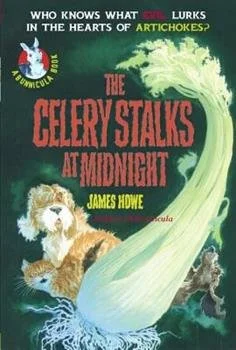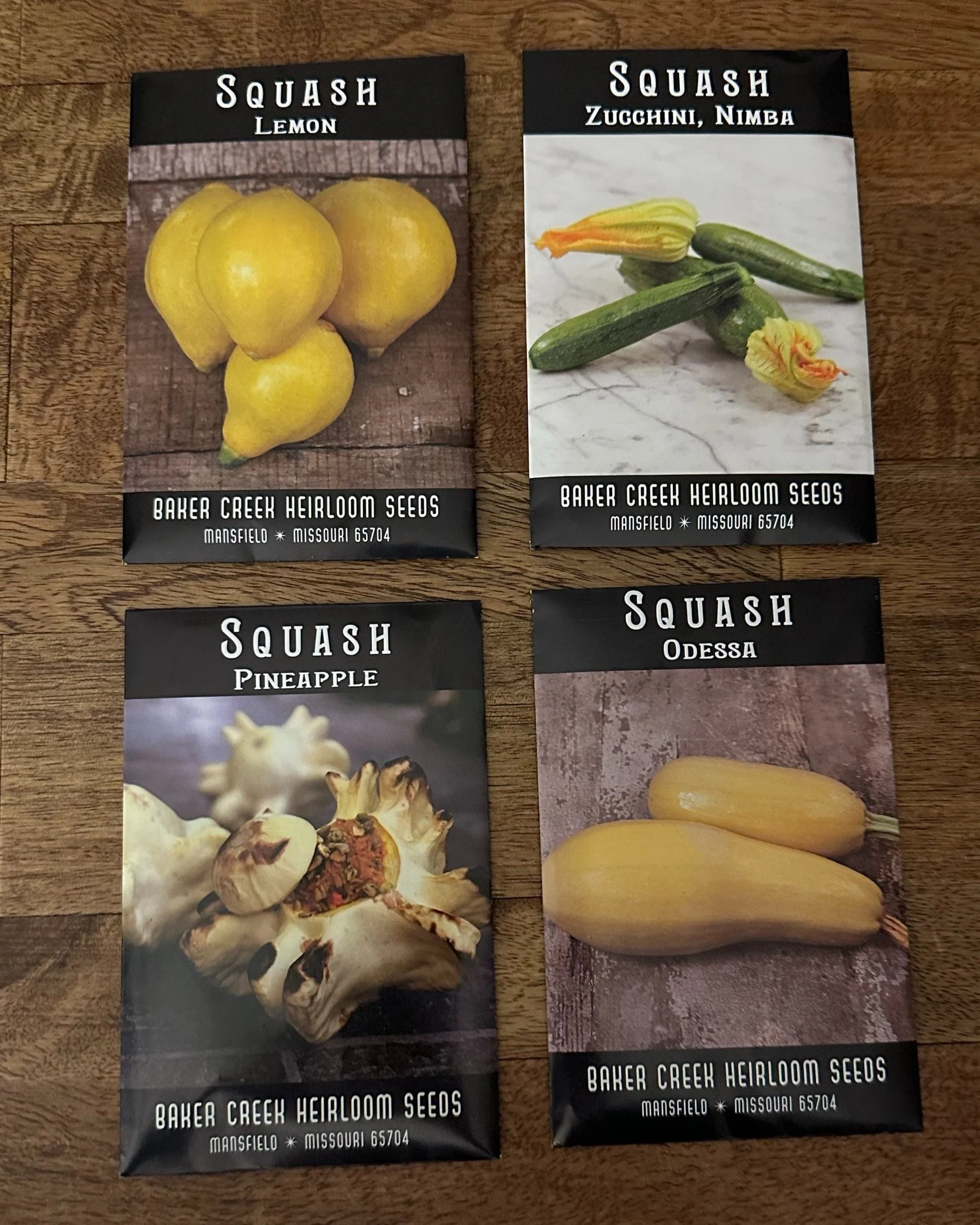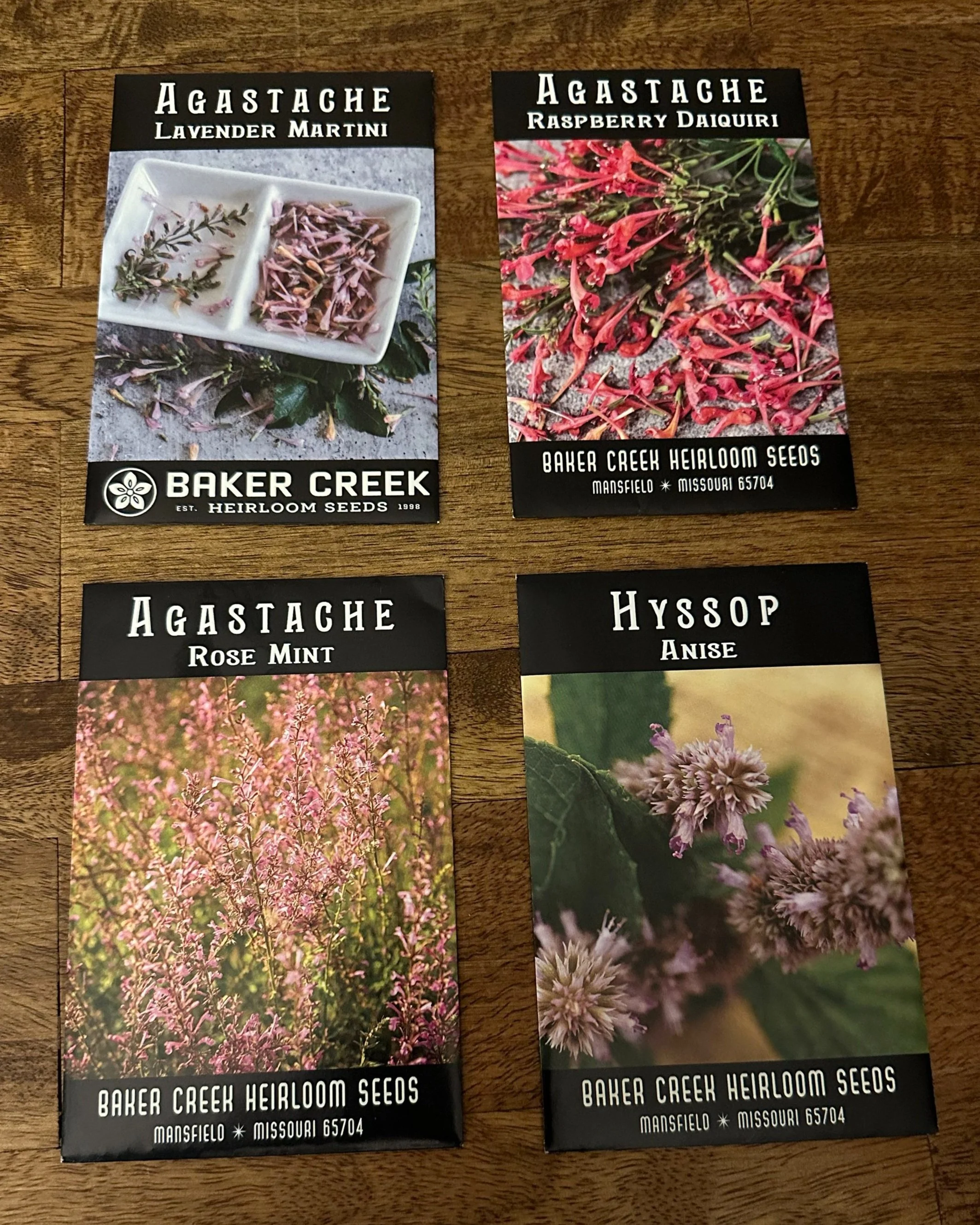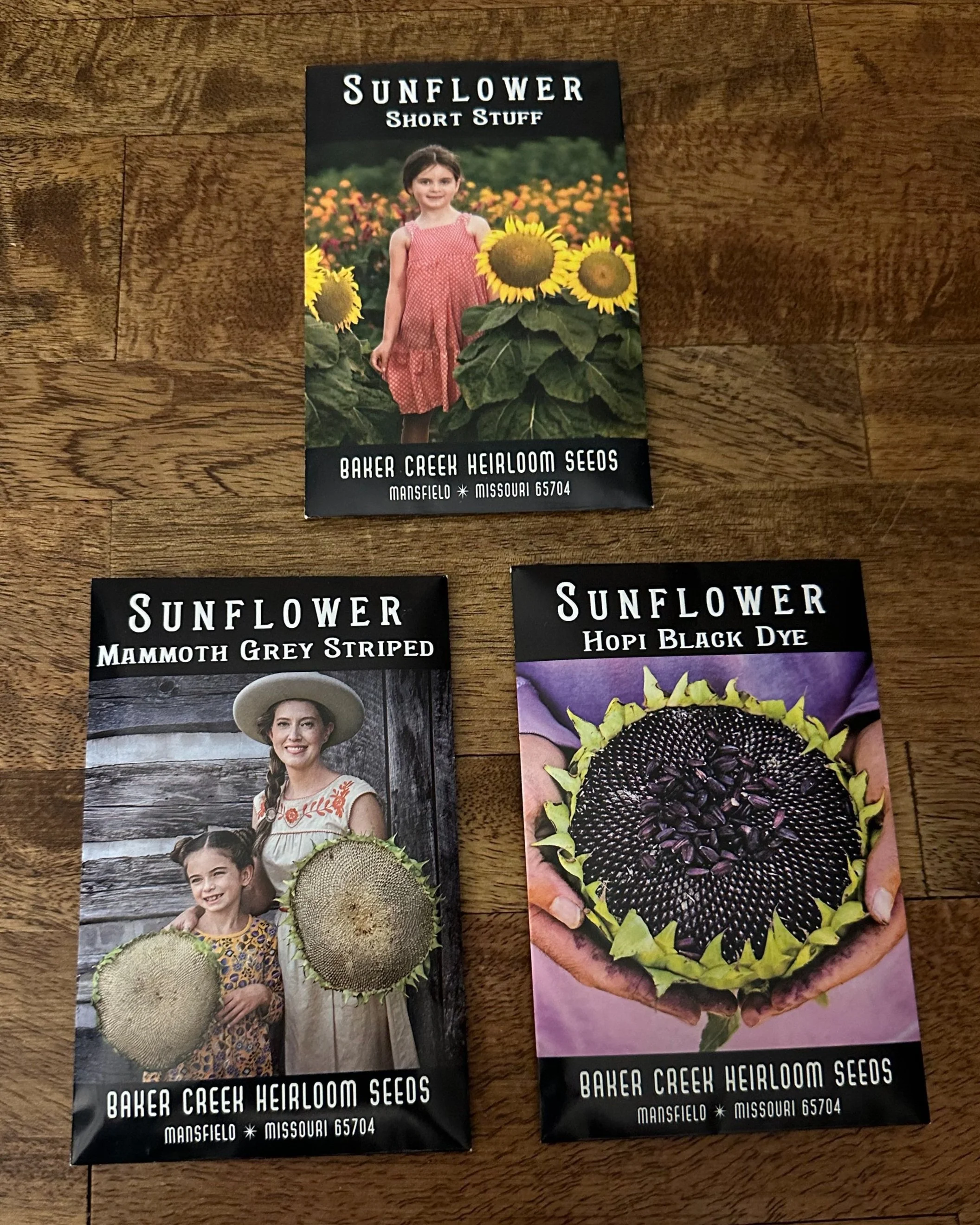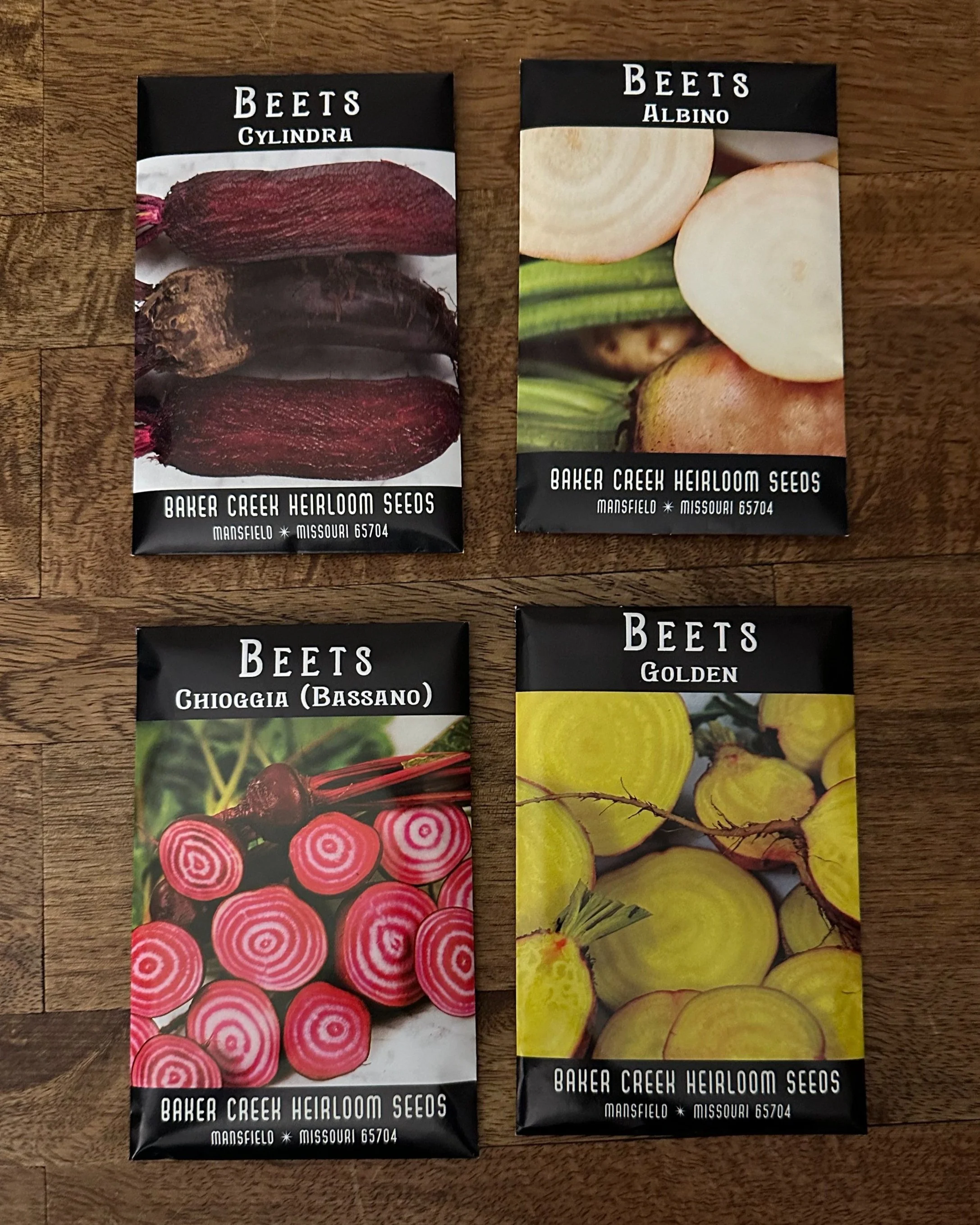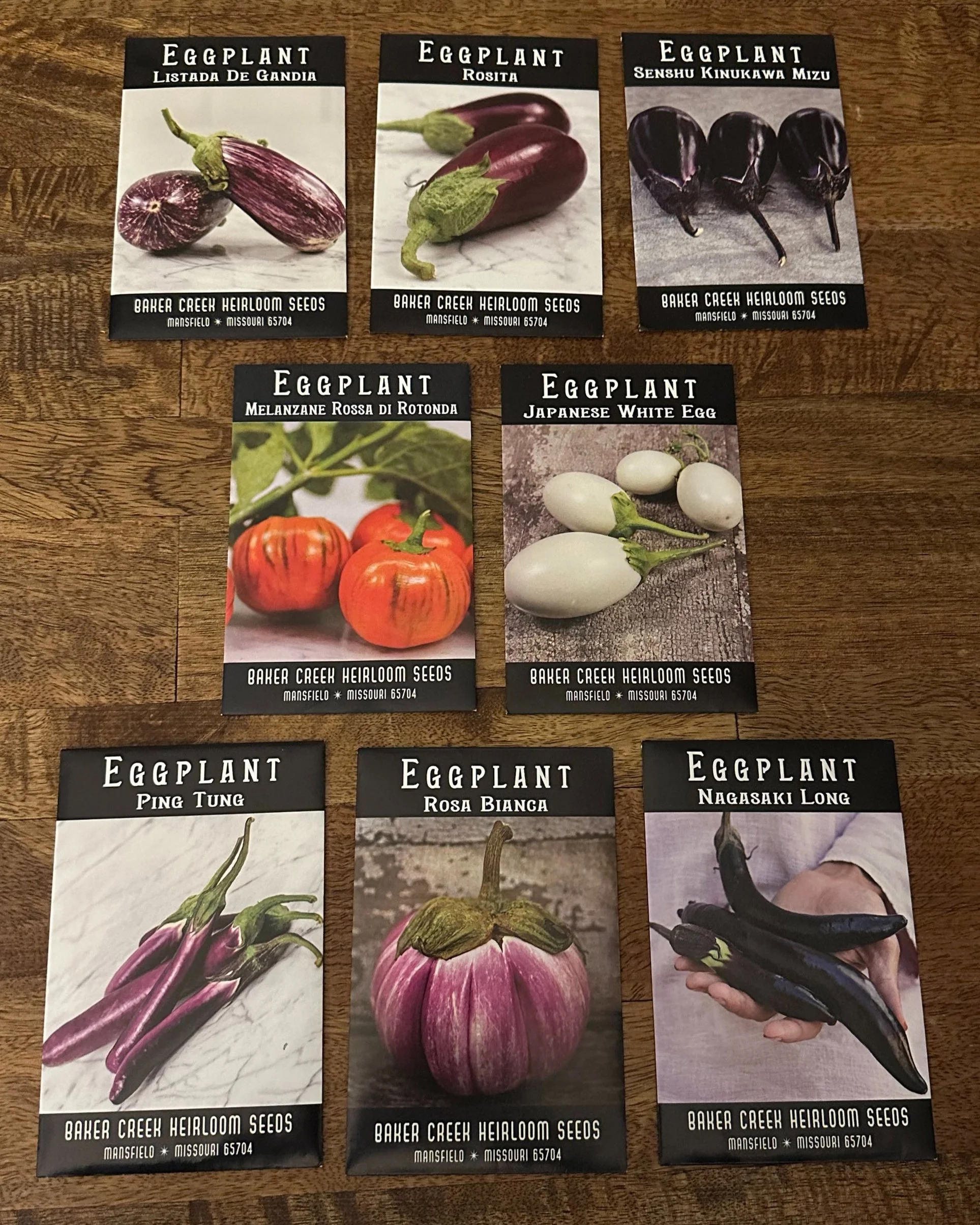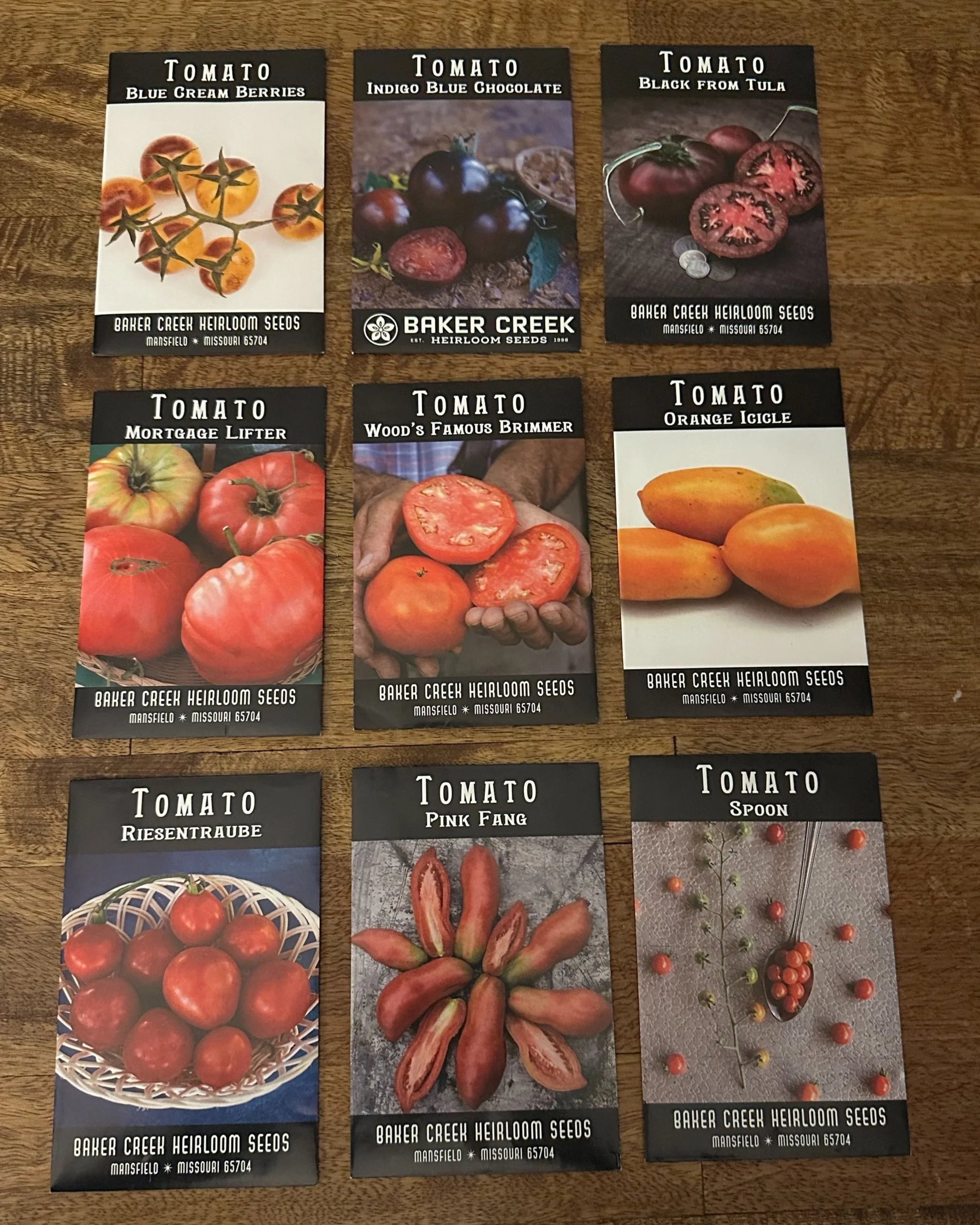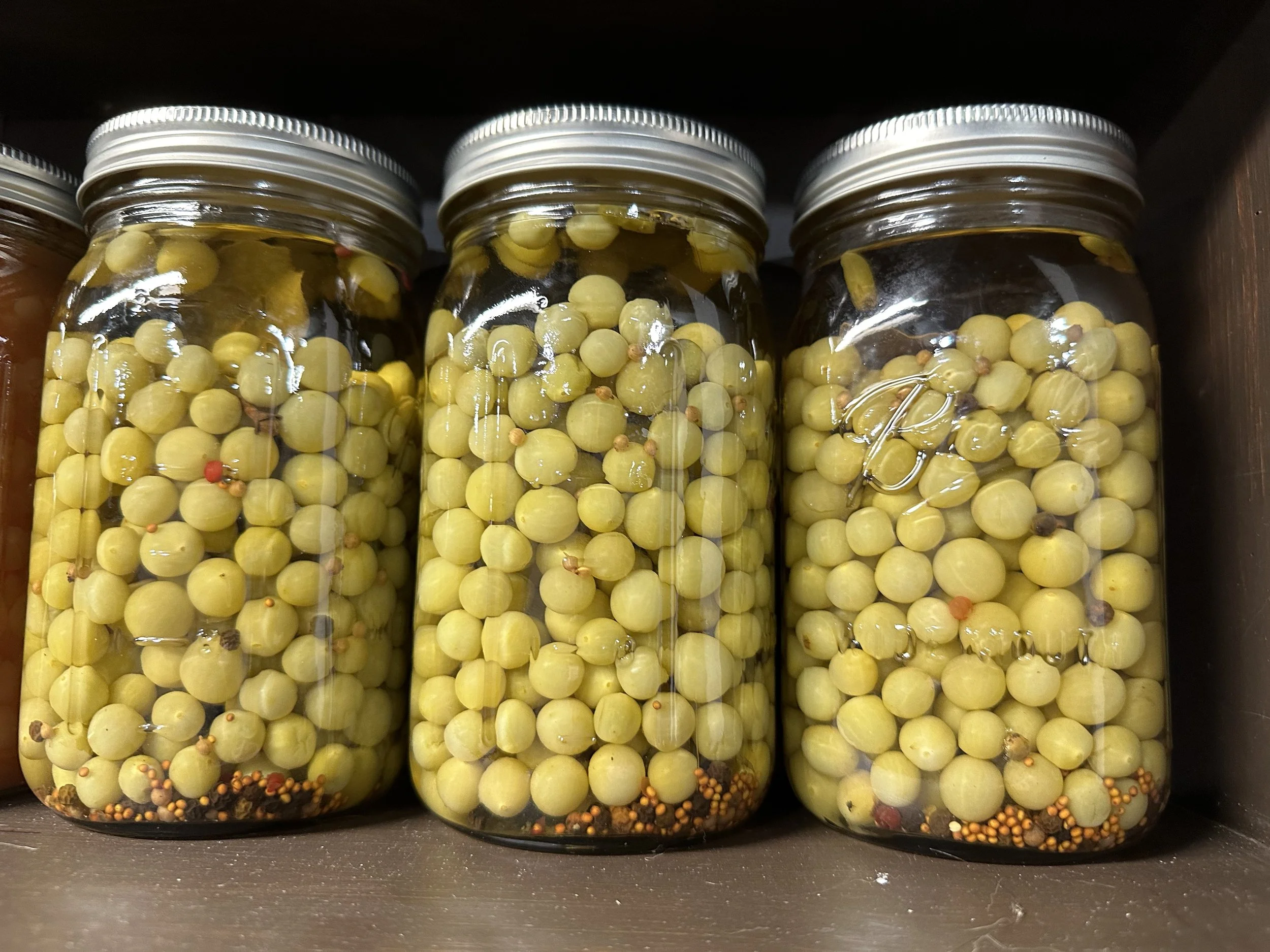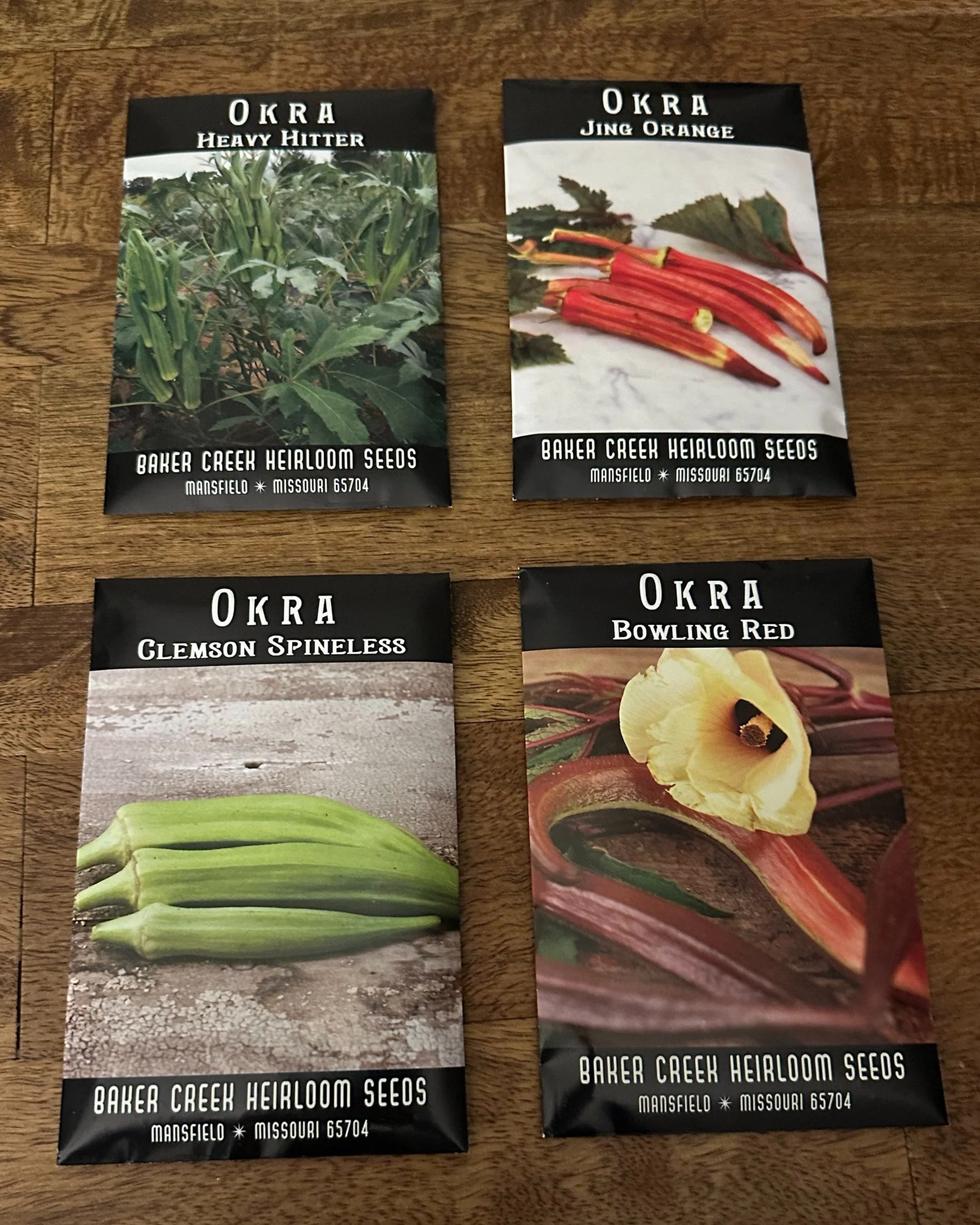Planning the garden - what shall we grow?
One of the biggest draws of the homestead - which does not yet have a name (accepting all ideas!) was the garden. It’s a large area, maybe half an acre, with raised beds in tiers moving up the side of a hill. It’s already fenced in with 10’ deer fencing. There’s a pretty red potting shed in the back with the chicken coop and run coming off to one side of it and nesting boxes in between. The seven chickens who live there came with the property; I’ll write a post about them soon. This photo doesn’t show all the beds; but it does have a cute puppy in it.
We moved into the house July 1, and hit up the local Lowes for seedlings, already long in the tooth by that time, and used the holiday weekend to get them in the ground. We really had no time to properly assess the soil in the different beds, and we had no history of what had been planted where in the past. We planted a lot of basil, tomatoes, and peppers, most of which did well on the east side of the garden. The okra did okay, and the squash and cucumbers mostly succumbed to powdery mildew.
We learned from this exercise a few key pieces of information, including more direct observation of the amount of direct sun and how well the soils are draining. We have some remediation to do in the spring, including shoring up the raised beds and amending the soil. We’ll mix in some of the sand, straw, and chicken waste compost we’ve been gathering all year, and we’ll also figure out how to get enormous quantities of high-quality compost and mulch delivered to the house.
In the meantime, we needed to start planning the garden basically by New Years. A number of plants that we want to have in the garden this year need to be started indoors. The earlier you start them, the longer the lead time they have, the bigger they are when you finally get them in the ground, the more time they will have in production during the season.
Seed sourcing
I am a big, big, big fan of Baker Creek Seeds. Baker Creek is based in Missouri with a seed bank in Petaluma, CA - which I got to visit once on a West Coast visit. It’s in an actual former form, which ups the charm factor by many times. Even without the charm factor, though, Baker Creek is on a mission to save and propagate heirloom and other rare seed varieties. I want to note that I have no affiliation with Baker Creek (or anything else) - this is just an itsy bitsy baby blog, we’re too young for affiliates. But in case anyone wondered - I’m just a fan-girl.
Not to get on too much of a tangent, but the lack of diversity in the fruit and vegetables grown in our current food culture is a big problem. Lack of diversity means that our foods are vulnerable to diseases and have little genetic diversity to draw on. If a variety is susceptible, it’s all gone. Just ask fans of the Gros Michel banana. And then go read more about Kew Gardens, they’re really cool.
There are many benefits of ordering seeds from Baker Creek. First, you can avail yourself of a much greater variety of options for your plants. You can find dozens of varieties of tomatoes, peppers, squashes, etc. Second, you are supporting them in their mission to save unique varieties and reintroduce diversity into the home gardens of the US. Third, you can justify ordering the Big Book.
A thing of beauty!
This thing rivals the Sears Catalog in joy (and almost in size). I’m guessing only half my readers know what fun it was to get the Sears Catalog in the mail each year and look at all the beautiful dresses and dishes and things. My mom always let us cut it up for collages and paper dolls, after we’d had a chance to flip reverently through it a few times. A close runner up in my childhood was the Swiss Colony catalog that would arrive just before Christmas. It’s totally normal for a kid to fantasize about baking Petit Fours, right?
The mouse was always so cute! Also a very weird choice of mascot for a purveyor of prepared foods.
The Whole Seed Catalog also arrives before Christmas (or any other end-of-year holiday you celebrate), and reviewing it is a perfectly delightful activity to engage in while drinking mulled wine or egg nog, cozied up in a blanket next to a sparkling and softly lit tree. It truly is the most wonderful time of the year.
As with the Sears Catalog, I advise reviewing the Whole Seed Catalog a few times before making any selections. The first time is just to take it all in. The second time is to pick out everything. And if you’re like me, you’ll pick out EVERYTHING. You’ve got to get it out of your system. Because admiring all of these beautiful varieties is justified; but buying them all would not be. The next step is to winnow things down based on where, when, and how you’ll be planting. It can help to have a few parameters for each kind of plant and to limit yourself to a set number of varieties of each plant.
If discipline doesn’t impose some boundaries, price may. These seeds do cost more than what you may pick up from the cardboard racks at the big box hardware store. By several times, in some cases. In my experience, the germination rates are very good. But nonetheless, these seeds are an investment. Since many of these seeds are heirloom varieties, an enterprising person could anticipate saving some each year - I am an enterprising person, but I’m not ready to go down that road quite yet. I don’t mind paying the greater cost, since it supports Baker Creek’s efforts.
Once you do buy the seeds, in the likely event that you don’t need to use all that you’ve received, they can be kept in the refrigerator or freezer for several years and show only minor losses in germination rates. So one packet can, in some cases, last through 2, 3, or even 4 growing seasons if they’ve been properly organized and cared for. More on that coming up - where I’ll share my approach to planning the garden, now that I’ve got a big enough garden to plan.
First, though, THE PLANTS.
the plants
After plotting out my garden and selecting all my plants, I wound up ordering over 100 varieties of three dozen types of plants, including vegetables, fruits, herbs, and flowers. My garden will include a span of cold to warm season plants, and will include a tea garden, as well as established perennial herbs. Here are all of the varieties I ordered, grouped by type of plant.
The Alliums
These include onions, leeks, and shallots. I also plan to plant some garlic, but it is best planted in the fall, and our plans weren’t yet ready, so it will have to wait until this fall, for a payoff in spring of 2024. Meanwhile, we have onions, leeks, and shallots from seed. I chose varieties that matched my taste for cooking as well as those that mentioned keeping well.
The Greens and cruciforms
I’m lumping together the cruciferous vegetables - all cabbages, broccoli and cauliflower, bok choys and such, with other greens, including spinaches and lettuces. Several of these plants need specific growing conditions - cruciforms like to start in the early spring and prefer cooler weather. Some flower only on a second year stalk. So I’m planting these on the shadier west side of the garden and will plant them with companion plants, including self-seeding dill.
The Herbs
We have three beds with well-established perennial herbs, including spearmint, oregano, thyme, sage, and garlic chives. We’ll be adding to these to include some lemon balm and marjoram. But we’ll also grow a row of different kinds of basil plants. The basil seedlings we planted last summer did extremely well on the sunny east side of the garden. I’ve picked out a few more varieties that we’ll grow of these annual herbs. I’ve added some fennel to the mix, too.
I’ll also be planting celery, including a cutting celery that eats more like a parsley than a celery. I usually like celery for its flavor, rather than for the texture of the stalks, so I opted out of any large stalked varieties. Possibly I also still harbor some childhood fear of celery.
Who does know what evil lurks in the hearts of artichokes??
The Cucurbits
Cucurbits include all varieties of winter and summer squash, melon, and cucumbers. I selected four kinds each of all of the above. I selected varieties that matched my culinary preferences and ambitions, as well as those that indicated they were good for a small garden. Because our plots are small and our squash will be grown on a trellis, I selected smaller varieties of winter squash and melon that wouldn’t have too much weight.
The Flowers
I selected a few varieties of culinary flowers to plant from seed, including sunflowers, a few varieties of agastache and hyssop, which are delightful for pollinators and make nice tea, two varieties of bee balm - which can also be used to make tea, and their name should make clear that they are good for pollinators. These varieties are native or else non-invasive. I’m trying to include several such pollinator-friendly flowers, to make up for the 10 or so butterfly bushes I tore out of the garden in the fall. The summer we had with them was truly magical; walking among the swallowtails and hummingbird moths was a delight. But they are invasive and I made a personal commitment to rid our property of invasive plants to the full extent possible. I’ll write another post on the biggest offenders we’ve found on our plot and how we’re getting rid of them. Meanwhile, I want lots of flowers that our pollinators will enjoy.
In addition to the agastache and bee balm, I’m including two varieties of chamomile, and three varieties of amaranth. Amaranth are generally used as landscaping flowers, but they are also edible - though some varieties are easier to use than others. Amaranth greens can be eaten when young and tender, and their seeds can also be harvested. I’m planting three varieties. One of these makes a natural dye - as do one of the varieties of chamomile and one of sunflowers - so I’ll be able to grow the colors for a natural scarf. I plan to combine these with dye from our black walnuts to make a signature color palette. You’ll definitely see that post when it happens, but it will be several months from now.
The Legumes
I’m planting four varieties each of peas and beans; for the beans, I selected two “long” varieties and two drying varieties. I was excited to see a native variety traditional to the area, so that had to go on the list.
The Roots
The seeds I purchased include carrots, radishes, and beets. I’ll also be planting potatoes as well as ginger, galangal, and turmeric. These will grow in our planting zone, but only as annuals. That’s okay; we can store and process them this summer and have them through the winter. I’ll also try to bring some of the rhizomes to overwinter as potted house plants.
The radishes include a few mild varieties - I don’t love sharp tasting radishes all that much. They are fine in small quantities, but I had a lot go uneaten last year. I also chose a unique variety that produces edible seed pods.
For beets and carrots, I chose a colorful assortment. And Baker Creek threw in a bonus packet of carrots!
The Nightshades
These include what are, for me, the most exciting of the vegetable garden plants - tomatoes and peppers. I like eggplants too; but the peppers and tomatoes are the stars of the show. I selected a mix of slicing tomatoes, small tomatoes, and paste tomatoes, and mix of sweet and hot peppers. I didn’t select any bell type peppers, since they just aren’t our favorites.
Among the tomatoes I select are these little so-called “spoon tomatoes’. Last year, we had a number of highly productive cherry tomato plants. At the end of the season, they were covered in green tomatoes. I’ve often included some green tomato in my canned chow chow, and I’ve done green tomato chutneys in the past. But these little green cherry tomatoes were so tiny and adorable; I decided to try pickling them with a few tiny hot peppers thrown in. I hoped they’d be something similar to a pickled caper - a garnish for salads to add a hit of strong sweet-hot-sour flavor in a single bite. They turned out even better than I’d hoped, and so these tiny spoon tomatoes will, I hope, furnish a large quantity of pickleable baby green tomatoes.
Okra
The final cast member in our garden show is okra. I know okra can be divisive; I happen to love the pods, pickled, roasted, and fried. I also like the texture they add to soups and stews. So I picked out a few varieties, mixing those with larger and smaller pods to see what grows well. I’m hoping to let a few pods “overgrow” for the purpose of making okra “pasta” with. I have a secret and surely ill-advised idea to make a frog-eye salad with them. Also, I’m not a huge football fan, but I was a long-time resident of Georgia and was inculcated into bulldog fandom as much as I can be inculcated into a football fandom. For that reason, an okra variety called “Clemson Spineless” was too much to resist.
So that’s what I’ll be growing! I’ll share more over the coming season about how they all do.
Stay tuned for more this week on how the heck I’m planning to keep track of all of this.










